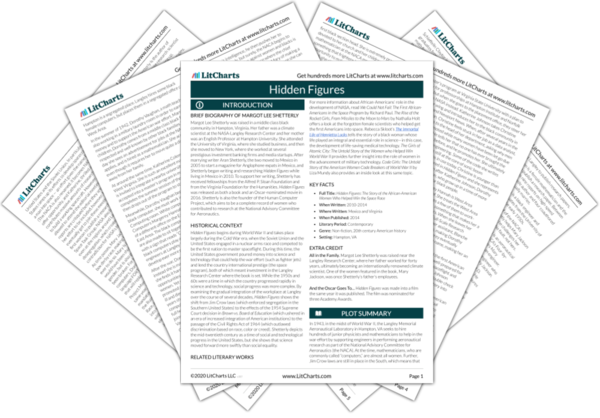Just because Dorothy is smart enough to get a spot at Langley doesn’t mean her work will afford her the respect she deserves: Dorothy’s progress at Langley is undermined both because she is African-American and because she is a woman. Male engineers communicate with her through her white supervisor, then take credit for the work that she does when she does it correctly. Langley is famous, but Dorothy’s work there is not glamorous and sometimes it can even be tedious and unrewarding.
